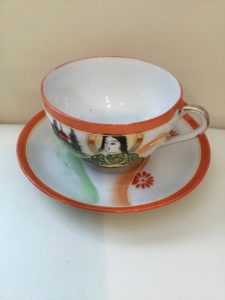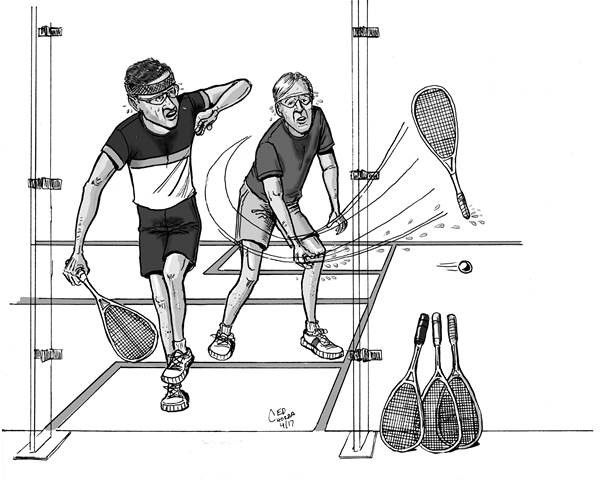By Richard Millman
For many years now, I have subscribed to the notion that hitting a squash ball with a squash racquet is only rarely a good idea. The contact between your racquet and the ball should be a thing of delicate, intimate and extraordinarily sensitive detail. To achieve this, several areas need to be trained.
First, you need to have full control over your own body. After all, if you want to fully understand the intimate moment that contact between racquet and ball is going to occur, you need to know where your own body is in the universe. Of course, most of us know approximately where we are, but this is only sufficient for approximate striking of the ball—and we are talking about exactitude.
To achieve exact knowledge of your own body is a journey of a lifetime, but one of the ways that I have discovered that quality work with agility ladders is one of the ways that helps most. that helps most is doing quality work with agility ladders. These ladders, which can be inexpensively bought, massively improve the precision with which we, as squash athletes, learn to control our weight and balance. Both simple and complex routines can be repeated, ensuring that no part of the ladder is ever touched. By developing proficiency at ladder work, you can make the first steps toward exact control. The ladder forces you to practice making very fine adjustments of your balance and therefore controlling exactly how much of your potential weight you distribute when touching the ball.
 However, once you have control of your body’s machine—your weapon, if you will—you must then learn to employ your imagination so that your weapon enjoys precise control. A student told to hit a squash ball will do just that—hit it.
However, once you have control of your body’s machine—your weapon, if you will—you must then learn to employ your imagination so that your weapon enjoys precise control. A student told to hit a squash ball will do just that—hit it.
So here is how I think of it and explain it to my students. When I was a young boy, my grandmother had some beautiful, delicate Chinese tea cups. I was fascinated by these tea cups, which were forbidden to me to touch. My younger brother was always likely to turn me in if I got up to mischief (probably not true but that’s what I thought at the time).
Here was the scenario. I walked into my grandmother’s dining room one day and lo and behold, there on the dining room table the entire Chinese tea set was laid out. The cups were elegantly seated on their saucers. My mother and father were in the front room down the hall way, deep in conversation with my grandmother. My rotten little brother was lurking somewhere—I don’t know where—but I didn’t want him to find me in the dining room. Barely daring to breathe, I picked up one of the tea cups from its saucer and closely examined the treasure first hand. Keeping in mind the likely fury from my parents and the lurking danger of the rotten little brother, can you imagine how delicately I replaced the cup on its saucer?
For me, that is what I am trying to do when my racquet touches a squash ball: replicate the delicate touch of replacing one of my grandmother’s teacups.





